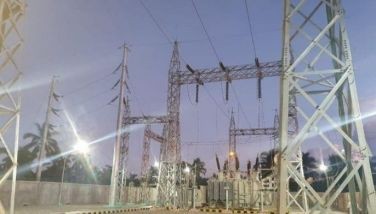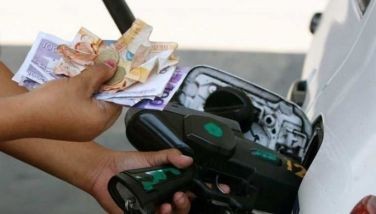Social spending, the pandemic and the last SONA

A central point of the last SONA of President Duterte was that the economy was poised for leapfrog into the class of high-growth economies, but the pandemic stole that energy and put the economy into a spinning decline.
Rise in social spending during Duterte administration. From the time he took office, social spending of the government has risen. in response to rising population and the adoption of conscious programs that the administration embraced and put into the country’s economic plan.
Duterte’s social services spending, as a percent of the GDP, has exceeded that of Noynoy Aquino’s by at least one percentage point. Aquino’s spending never reached seven percent of GDP, Duterte’s had reached a level of 8.5 percent. Previous presidents even had lower social spending levels in relation to the GDP.
Education. Delivery of education to the masses through the support of public elementary and intermediate programs have to catch up first with expanding facilities because of growing population.
Next comes qualitative improvements. The reform of the curricular basis of the public educational system is a major program that was inherited from previous Aquino administration which adopted the reform of schooling from K-12 that adds two years to secondary schooling. Such a change puts the country in line with the usual international standard of 12 years of schooling up to secondary education.
The big implication of this new program is an increase in investment in public education. It has implications on salaries of teachers, quality of teaching materials and the improvement of facilities.
At the tertiary level of education, state-supported schools were made to provide tuition-free education. State-supported schools depend partly on tuition fees to finance some of their programs. Losing that income was likely to affect them badly.
The government solution to this issue was via direct subsidies by paying the tuition income they lost. For the moment, this might be a solution, but in due time, if and when the scarcity of government resources should become a problem, the budgets of state colleges would have to be supplemented directly by more increase in budgeting proportional to their enrollment. Otherwise, their effectiveness as institutions would be in jeopardy
PhilHealth or the health delivery system. The “universal” public health program of PhilHealth makes the health delivery system more accessible than before. The program was instituted in 2019 when the PhilHealth law was passed by Congress.
The government’s intention is to provide health service to all citizens through programs provided by the Department of Health. There is a companion membership health insurance program which is maintained by the payment of premiums from personal contributions.
The health services are supported from the budget through incremental earnings of taxes on tobacco and alcohol, and from half of the national government income from the incomes of PAGCOR (Philippine Amusement and Gaming Corp.) and from 40 percent of the income of the Philippine Charity Sweepstakes.
These sources of taxation and incomes are robust as revenues to finance any social program. But the health services provided by the government needs to be realistic and well-defined so that it is not treated as elastic or infinite in delivery.
(In fact, as an almost immediate wake-up call, the PhilHealth program was tested by a serious financial scandal in its early period as an operation which immediately threatened its viability in 2020, during the pandemic year.)
Pantawid programs or conditional cash transfers. The 4Ps program, or Pantawid Pamilyang Pilipino program – more specifically called a conditional cash program – to give cash to identified families that qualify as very poor, in return for fulfilling certain conditions related to the schooling of their children – has been expanded in coverage in the course of three presidencies.
The program began under Gloria Macapagal Arroyo and progressively enhanced under the successive presidencies of Noynoy Aquino and Rodrigo Duterte.
The program is a direct effort to redress income inequality in the fight to reduce extreme poverty.
Pandemic budgetary expenses: Bayanihan 1, 2, and more? When the pandemic hit, the country went into lockdown and the economy was interrupted in its normal functioning. GDP fell, and so did the revenue income of the government.
The government budget was rearranged by the demands of the emergency. Sixty-five percent of the approved budget was re-allocated according to Bayanihan 1 Law. This meant P279 billion of the original P428 billion budget. Bayanihan 2 was also enacted to supplement the first.
By April 15, according to the Budget department, a total of P646.7 billion of money had been released to the agencies.
The COVID emergency reduced the working budgets of many government departments and agencies, and local governments, but enlarged programs of frontline agencies as they help to fight the pandemics, including local governments.
During this period marked by economic decline, the government programs that increased in volume (aside from infrastructure construction) were those related to the war against the virus: the expansion of health services, both in national and local governments, the purchase of vaccines and the construction of emergency health facilities, and the release of financial assistance to citizens impoverished further by loss of jobs and gainful opportunities.
To mobilize the proper finance of rising expenditure in the midst of falling government incomes, the fiscal authorities undertook to secure long term external finance (borrowing from multilateral institutions and the bond market) to back up needed increases in public spending.
Economic recovery and growth: the next challenge. Many of the reliable measures of government performance related to output or GDP would look very bad at this time in these circumstances. They would all be very depressing.
They tell us that the road toward economic recovery constitutes a colossal challenge for our policy makers. They better arm the government with the proper tools to overcome the policy gaps that can only be cured by government action in economic reforms.
It is clear that the laws that the Congress has not yet passed to influence the economic recovery need to clear the logjam.
Moreover, not only must the government rely on domestic private talents and resources. Very clearly, the government must make the country attractive to foreign investors to achieve a vibrant economic recovery and growth.
For archives of previous Crossroads essays, go to: https://www.philstar.com/authors/1336383/gerardo-p-sicat. Visit this site for more information, feedback and commentary: http://econ.upd.edu.ph/gpsicat/
- Latest
- Trending


























